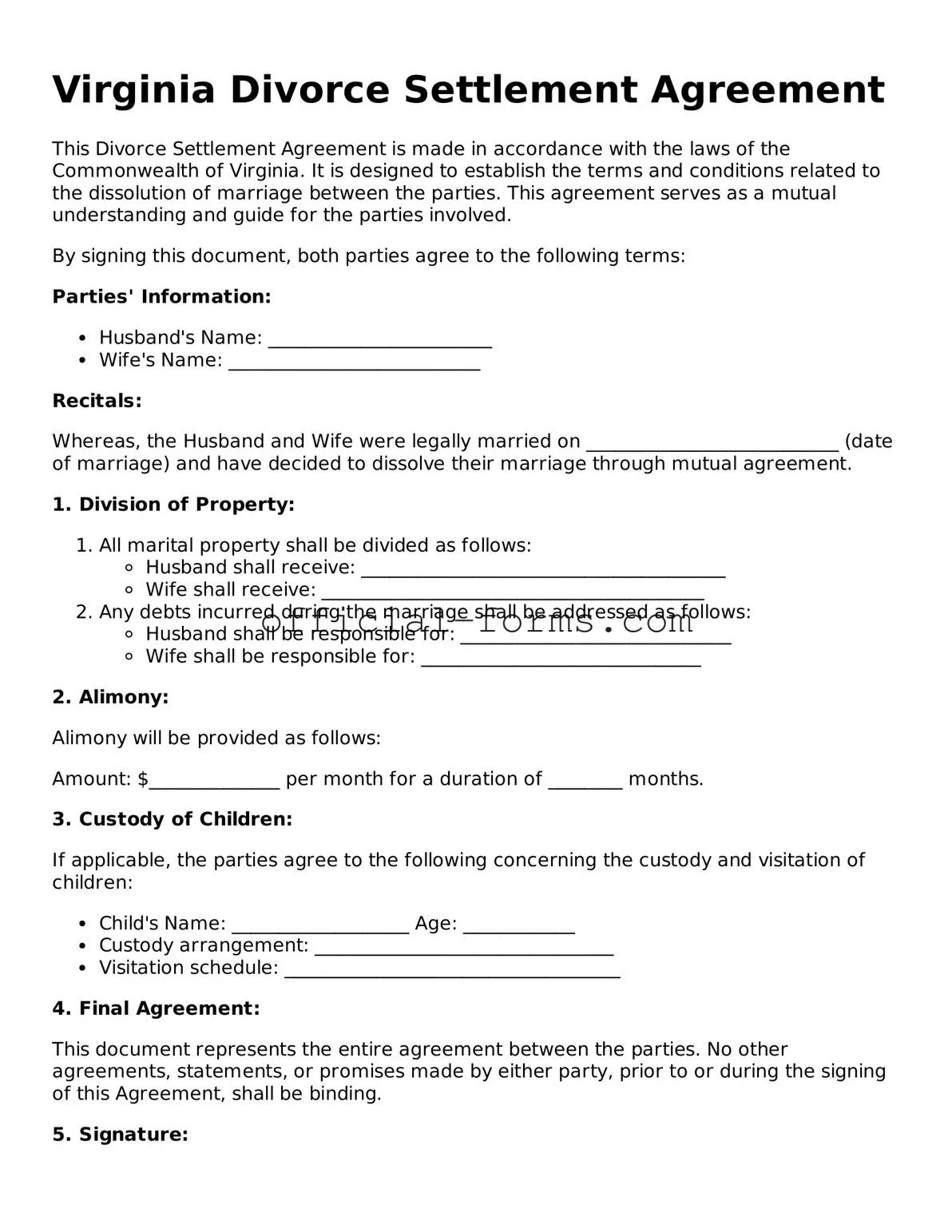Filling out the Virginia Divorce Settlement Agreement form can be a daunting task. Many individuals make mistakes that can complicate their divorce process. One common error is failing to provide accurate personal information. This includes names, addresses, and other identifying details. Inaccuracies can lead to delays in processing the agreement.
Another frequent mistake is neglecting to fully disclose assets and debts. It is crucial to list all marital property and liabilities. Omitting any significant assets can result in disputes later on. Transparency is essential in ensuring a fair settlement for both parties.
People often underestimate the importance of clearly defining custody arrangements. Vague language regarding child custody can lead to misunderstandings and conflicts. It is vital to specify physical and legal custody, visitation schedules, and decision-making responsibilities.
Additionally, many individuals overlook the need to include specific terms for spousal support. Whether or not spousal support is to be paid, the agreement should clearly outline the amount, duration, and conditions. Failing to address this can leave one party vulnerable to financial instability.
Another mistake is not considering tax implications. Many individuals do not realize how certain decisions regarding property division and support payments can affect their taxes. Consulting with a financial advisor can provide valuable insight into these matters.
People sometimes forget to sign and date the form. This may seem trivial, but an unsigned agreement is not legally binding. Both parties must provide their signatures to validate the document.
In some cases, individuals may rush through the process without reading the entire agreement. This can lead to missing important details or misunderstandings about the terms. Taking the time to review the document thoroughly can prevent future complications.
Moreover, individuals may not consider the need for a witness or notarization. While not always required, having a witness can add an extra layer of validity to the agreement. Notarization can also help in verifying the identities of both parties.
Finally, a lack of legal guidance can lead to significant oversights. Many people attempt to navigate the divorce process without consulting an attorney. Legal professionals can provide essential advice and ensure that all necessary elements are included in the agreement.
